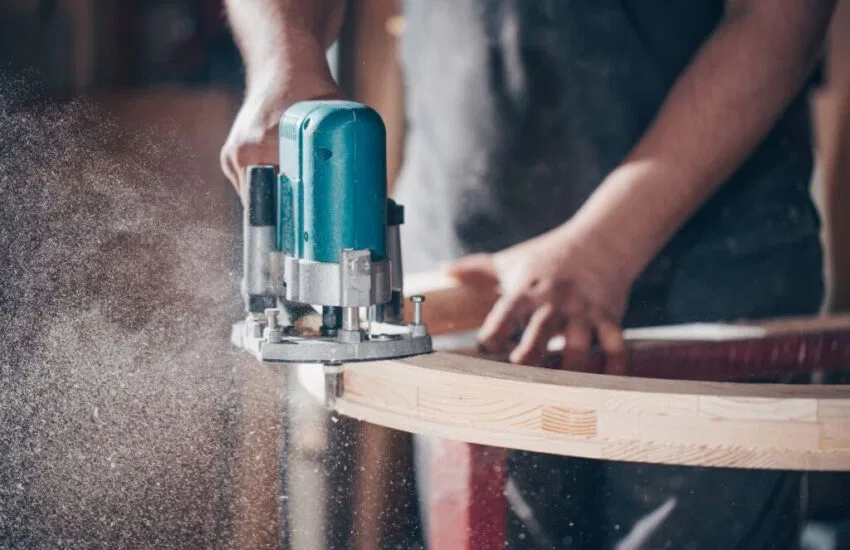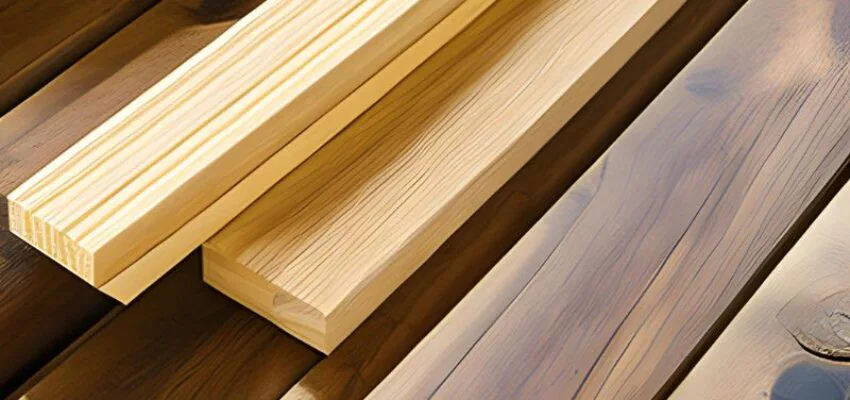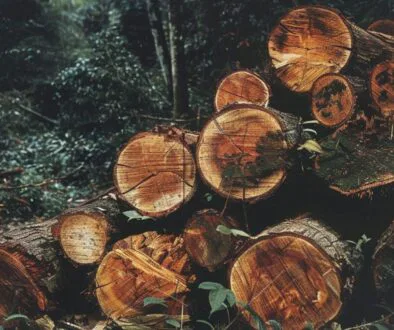The Pros and Cons of Using Rubberwood for Furniture

Published May 27, 2024
Is rubberwood good for furniture? With thousands of Google searches for that question every month, you’re not the only one wondering about its viability.
The short answer is it depends.
While most people think rubberwood is an elastic wood hybrid, it isn’t quite that. Rubberwood is actually a medium-density hardwood produced by harvesting the Pará rubber tree (Hevea brasiliensis). Most of these trees grow in parts of Asia, Africa, and South America. Pará rubber trees are cultivated for their latex and, at the end of their useful life, harvested to become rubberwood lumber. Because of that, rubberwood is considered an “environmentally friendly” wood.
But how does it fare against other types of wood as a furniture material? Is it worth spending money on rubberwood items? Let’s look at the pros and cons of using rubberwood for furniture.
What is Rubberwood?
Rubberwood is a type of wood that comes from the rubber tree. It is known for being durable and robust, making it a popular choice for furniture and flooring. One interesting thing about rubberwood is that it is an eco-friendly option because it is made from trees that have already served their purpose in producing rubber.
It has a light color, similar to beech wood, and is easy to work with, allowing various finishes and styles. Rubberwood is also resistant to warping and cracking, making it a practical choice for everyday use.
Pros Of Using Rubberwood For Furniture
Sustainability
According to WWF, approximately 10% of the world’s forests get cut down yearly to become fast-wood forests. Cutting down more trees than the rate they’re growing can have a severely negative impact on the environment. It can lead to soil erosions, landslides, and floods. Additionally, it can also hasten the effects of global warming. Harvesting rubberwood can reduce those effects since you’re using trees that would have otherwise been burned.
Durable
Contrary to most Western beliefs, rubberwood is less flexible than you think. It’s quite a durable hardwood belonging to the maple family. Its strength is about 9500 psi, stiffness of 1.3 million PSI, and hardness of 500 pounds.
Cost-effective
Since rubberwood is often considered a byproduct, it sells for lower prices than most wood. Some people think rubberwood is not a durable product, so they opt for other timber like oak, maple, or cherry.
Ideal for furniture
Processed rubberwood is very stable, with shrinkage and cracking kept to a minimum, making it great for furniture. Moreover, rubberwood has an incredible blonde to medium tan color.
Takes stains well
Rubberwood takes stains and finishes very well. This is especially great if you want to change its appearance to suit your tastes and setting.
Cons Of Using Rubberwood For Furniture
Perishable
Rubberwood is perishable and has a strong tendency to decay. Moreover, it is susceptible to fungal staining and insect attacks. To curb these effects, it has to undergo many harsh chemical treatments, which can be a turnoff to some.
May trigger latex allergies
If you have allergies to latex, rubberwood may not be for you. Some people have had some sort of allergic reaction while working with rubberwood.
Warping and twisting
While drying, rubberwood tends to warp and twist, causing it to distort before thoroughly drying. However, it can be quite durable and sturdy after it’s seasoned.
It isn’t great for outdoor use
Rubberwood is very moisture-absorbent, so it deteriorates more quickly when placed outdoors. For this reason, you’ll want to keep your rubberwood furniture indoors or in a less humid environment.

Frequently Asked Questions (FAQ)
Is rubber wood good for making furniture?
Rubberwood is sturdy and durable, making it good for making furniture. However, it may not be as strong as other hardwoods and can be susceptible to scratches. Regular maintenance and proper care can help maintain its quality.
Is rubberwood a good wood?
Yes, rubberwood is a good wood. It’s strong, durable, and eco-friendly. It’s also easy to work with and resists warping, making it a great choice for furniture and flooring.
Is rubberwood a real wood?
Yes, rubberwood is a real wood. It comes from the rubber tree and is commonly used for furniture and flooring.
Is rubberwood the same as MDF?
No, rubberwood is not the same as MDF. Rubberwood is a hardwood obtained from the rubber tree, while MDF is a composite wood product made from wood fibers and resin. Rubberwood is solid and durable, while MDF is engineered and composed of compressed wood fibers.
Is rubberwood good for outdoor furniture?
No. We do not recommend using rubberwood for outdoor furniture due to its susceptibility to moisture and weather damage. It’s best suited for indoor spaces where it can maintain its quality and longevity. Consider other hardwoods or outdoor-specific materials for furniture meant for outdoor use.
Is rubberwood better than pine?
Rubberwood is generally considered better than pine in terms of durability and sustainability. While pine is softer and more prone to dents and scratches, rubberwood offers a sturdier option with similar affordability, making it a preferred choice for furniture that needs to withstand everyday use.
The Verdict
With the above pros and cons, it’s safe to say that rubberwood will make a durable and sustainable furniture material unless you are allergic to latex. But if you will use it for outdoor furniture, ensure the wood is properly treated and sealed to keep it from warping and twisting.
Hire The Timber Experts For Your Next Project
Vintage & Specialty Wood should be your source of the highest quality timbers from around the world. When it comes to fabricating and installing reclaimed wood or specialty wood products in your home, we don’t cut corners. We offer many reclaimed wood and specialty wood products such as Douglas Fir, white oak, and much more. We also offer timber framing and wood flooring services as well. Contact our team today to speak to a timber expert about what Vintage & Specialty Wood can do for you.

This Blog Is Fact Checked
This content has undergone meticulous fact-checking by our team of internal experts. Gain a deeper understanding of the high editorial standards we uphold on our website here.

About The Author
Experience, exploration, and knowledge are the hallmarks of writer Rei Bayucca. Her dedication to crafting articles that both inspire and educate will leave you thinking long after you’ve finished reading.




